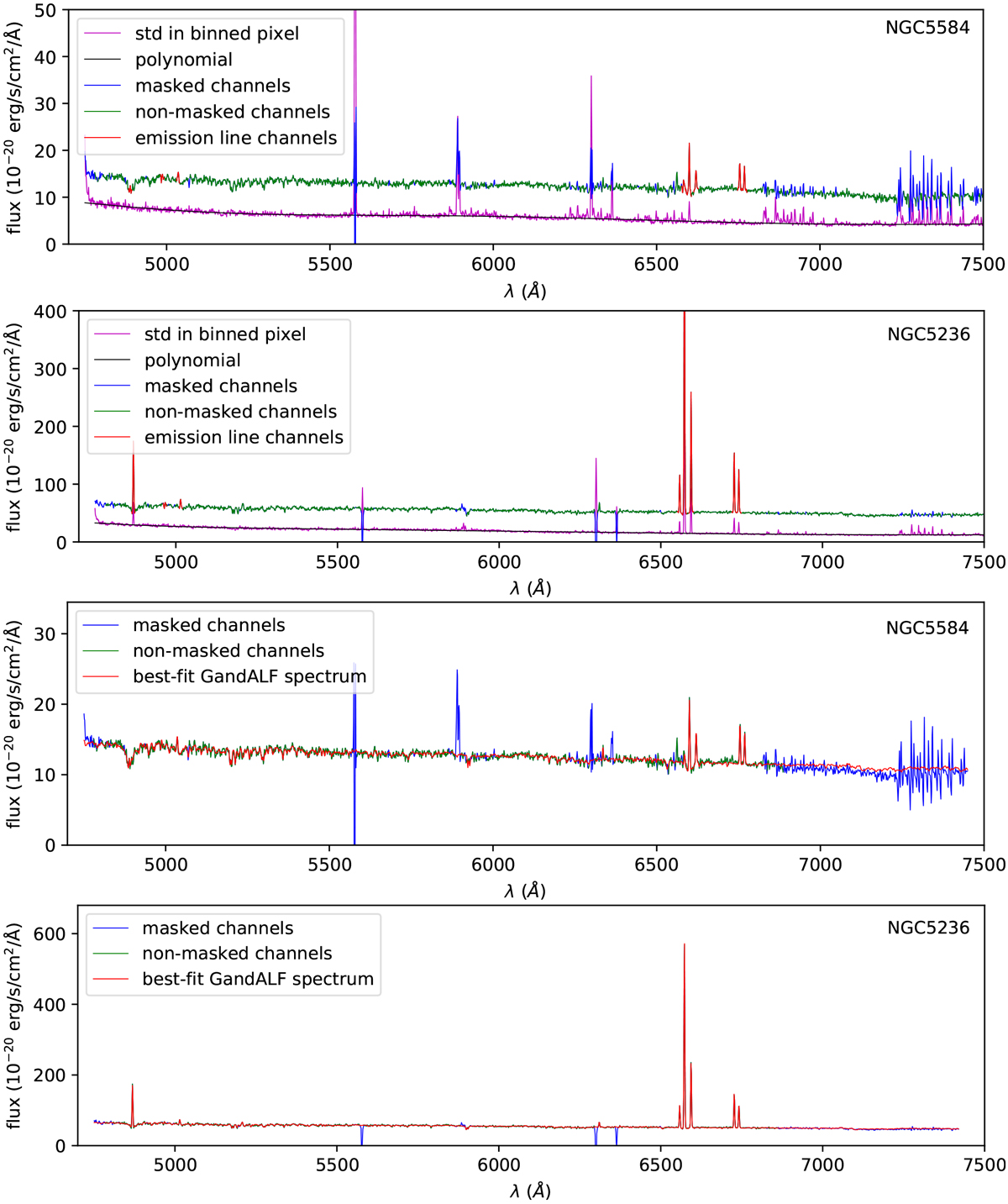Fig. 1.

Examples of the sky contamination masking (top two panels) and GANDALF fit (bottom two panels) for a random binned pixel of NGC 5584 (heavily contaminated by sky emission; first and third panels) and NGC 5236 (typical spectra; second and last panels). Top panel: these panels show the average flux (green) and standard deviation (magenta) of binned MUSE pixels within one Herschel pixel. The best fitting polynomial to the standard deviations is shown in black. Channels where the standard deviation is 3σ higher than the polynomial are masked (blue). The sky contamination present in the NGC 5584 pixel is masked effectively. Bottom panel: reddening-corrected MUSE spectrum (masked channels are shown in blue, non-masked channels in green) together with the best GANDALF (red) fit.
Current usage metrics show cumulative count of Article Views (full-text article views including HTML views, PDF and ePub downloads, according to the available data) and Abstracts Views on Vision4Press platform.
Data correspond to usage on the plateform after 2015. The current usage metrics is available 48-96 hours after online publication and is updated daily on week days.
Initial download of the metrics may take a while.


